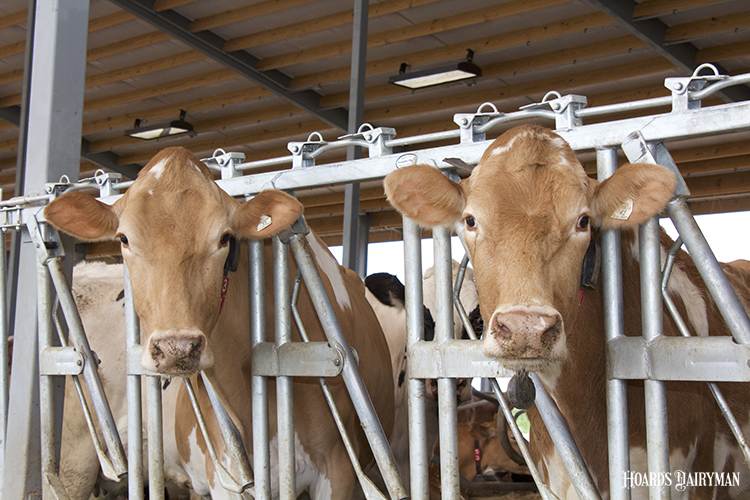
Bovine leukemia virus, commonly known as BLV, lurks in dairy herds around the world. Surveys indicate an estimated 45% to 50% of cows in the U.S. are infected, and 94% of the nation’s dairy herds have at least one positive cow.
At the American Association of Bovine Practitioner’s (AABP) annual conference, Ron Erskine, D.V.M., explained that a majority of these positive cows — around 70% — are asymptomatic. The remaining 30% are considered to be lymphocytotic, which means blood concentrations of B lymphocytes are elevated. Some animals will progress in the disease, and about 5% of BLV cases turn into lymphosarcoma. Erskine, a professor emeritus at Michigan State University, said lymphosarcoma remains as the number one reason cows are condemned at slaughter during postmortem checks.
Erskine said BLV prevalence in a herd matters for a few reasons. One is that BLV reduces milk production. A few large-scale studies came to a similar conclusion, and Erskine said there’s a 225-to-250-pound decline in rolling herd average for every 10% increase in BLV prevalence in the herd.
Since BLV is more likely to affect older cows, Erskine said the disease reduces longevity as well. In addition, it negatively affects immune function.
Over time, it has been learned that the adverse effects of BLV vary depending on the animal’s progression of disease. An animal’s ability to shed and spread the disease also depends on its stage of infection. Therefore, Erskine said the goal is to keep animals in the asymptomatic or aleukemic stage.
The first step is to do a herd profile to determine how many cows are infected and the age groups that are most affected. Typically, herds will see a stepwise progression in the number of infections as cows get older. However, if a herd has a high number of infected heifers, the reason why should be investigated.
“Looking at what group of animals is infected tells you where to go with your BLV control program,” Erskine noted.
BLV can be spread “through all the usual suspects,” Erskine explained, including needles, palpation, tattooing, and dehorning. It can also be transmitted through biting insects. Erskine noted that strict practices to reduce the transfer of fluids can be disruptive to cow flow and herd management, but some commonsense changes can go a long way.
For instance, in a herd that has infected older cows but only a small percent of infected heifers, cows should not be palpated prior to heifers if using the same sleeve. Also, if a herd has a lower prevalence of BLV, infected cows could be segregated from the other cows or culled to reduce the number of super shedder animals in the herd.
“What we are after is how we can reduce the pro-viral load transmission from cow to cow,” Erskine noted.








